Nathan Jones, left, and Jose Rubio at work at Woodson Lumber in Caldwell in December. Sarah Beal photo. Inset: Photo circa early 1900s courtesy Burleson County Historical Commission
History is alive and essential to Bluebonnet-area towns. That’s why examples still stand, from busy Main Streets to quiet back roads.
Stories by Addie Broyles,
Sarah Beckham and Sara Abrego
Long before cars or electricity, resilient men and women built lives in Central Texas.
Immigrants and settlers were determined to make this rugged land their home. Many towns were settled more than 200 years ago — some through forceful means — in the vast 3,800-square-mile area currently powered by Bluebonnet Electric Cooperative.
Crops and cattle transformed Caldwell, Brenham, Lockhart, Elgin and other communities into bustling centers of commerce by the early 1900s.
Century-old photos reveal many buildings erected then still stand today. Horse-drawn wagons filled dusty Main Streets, new merchants opened their doors, and businesses built from local brick and stone rose in downtowns.
Comparing those images with photos from today, you can see what has changed and what remains. Generations of families in our communities understood the importance of their past, and residents today continue to preserve these pieces of their history.
Bluebonnet, a relative newcomer to the region, was founded in 1939. As the cooperative marks its 85th anniversary, we honor our communities’ pasts and look forward to a shared future.
Woodson Lumber, Caldwell
For Jim and Harrie Woodson, creating a family business was a winding — and muddy — journey.
After their mother died in 1912, the brothers left Missouri for Southern California. They found jobs at a lumberyard there, working themselves “black and blue,” Harrie later wrote.
But their toil paid off. With the money they saved, the brothers moved to Caldwell in Burleson County and bought their own business, which became Woodson Lumber Co. in 1916. Back then, the town’s streets were unpaved, and mule teams trudged through deep mud to pull the Woodsons’ delivery wagons.
Sometimes it took a team of oxen to haul a load of feed across the street, Harrie wrote later. From the original Caldwell location, the business grew to add six other stores around Texas, selling lumber, hardware, building materials, farm and ranch supplies, lawn and garden products, and other goods.
The Caldwell branch has been renovated and expanded over the years, but some lumber bins there date to before 1916. Four generations — 12 Woodson descendants and spouses — have worked, or still work, for the family business. Ann Woodson Yager Chapman, Harrie’s granddaughter, succeeded her father, Tom Yager, as CEO in 1998.
She credits their longevity to close partnerships with all members of their communities, from local governments to churches, schools and generations of customers. “We played — and continue to play — a role in building the great state of Texas, from the days of horse-drawn wagons to 18-wheelers,” Chapman said. “That’s an honor for us.”
— Sarah Beckham

Old Rock Front Saloon, McDade
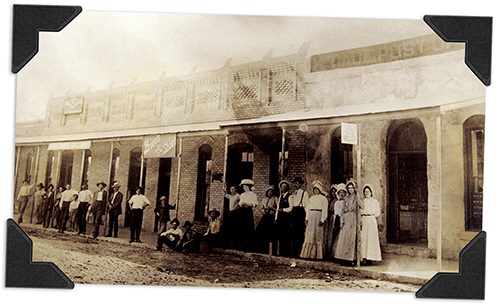
The Old Rock Front Saloon is the oldest building in McDade, a small community incorporated in 1870 southeast of Elgin.
The saloon was built in 1874 by John Dempsey Nash, a veteran of the Battle of San Jacinto nearly 40 years earlier. At the intersection of Old Highway 20 and Waco Street, the saloon was preceded by two wooden saloons, both of which burned down.
The origin of the large stones that gave the original saloon building its name still baffle local historians. The railroad, completed in 1869, brought people and supplies to what was — and still is — a quiet community. But the Old Rock Front Saloon was home to occasional mayhem in the early years, the site of revenge shootings and deaths.
The most notorious, in 1883, is known by many as the Christmas Day Shoot-Out and was such a dust-up that the local historical society has been re-enacting it each December in recent years.
The saloon closed in 1903, and from 1908 to 1933 the building was the local post office. Other early buildings sprung up along that stretch of road. Between the 1930s and the 1960s, the old saloon housed various grocery stores and cafes, and since the mid-1960s, it has been home to the McDade Historical Museum.
Now the saloon houses artifacts from the days when the community was a busy trading center in Bastrop County. The museum hosts chili suppers and educational events to keep the area’s storied past alive.
— Addie Broyles
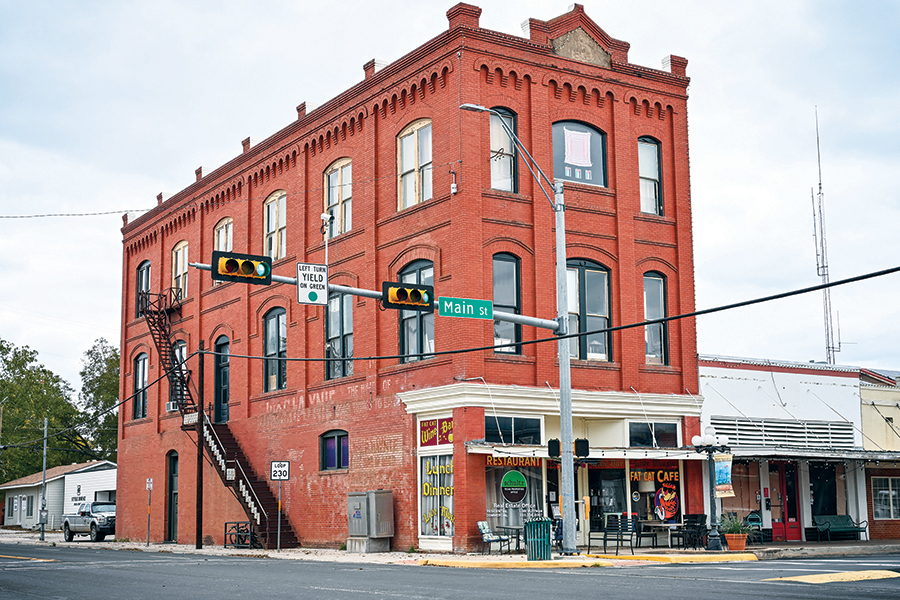
Old Masonic Lodge, Smithville
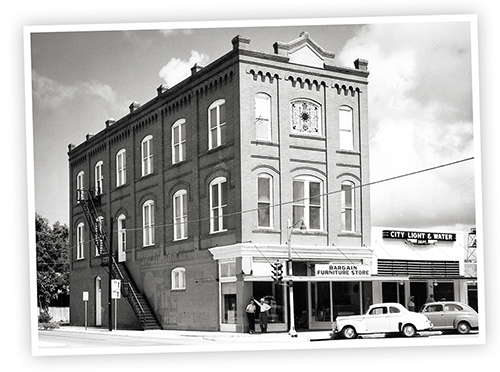
Smithville’s first buildings popped up in the 1870s, but when the railroad arrived in 1887, the burgeoning downtown moved nearer to the busy rail line and new depot.
In 1903, the W.J. Nixon Order of the Masonic fraternal organization built a narrow, three-story building with an extended brick parapet at 301 Main St. The Masonic lodge was the tallest building in Bastrop County for many years.
The Masons leased out the first two floors, and met on the top floor until the 1970s, when they moved to a building on Wilkes Street. Many different businesses occupied the bottom floors of the original lodge over the years, including Hainey’s Grocery, which sold dry goods to area residents until 1930.
It was also the site of an auto supply store and a furniture showroom with a radio repair shop in one corner. Most recently, the Fat Cat Lounge and Cafe, a restaurant and live music venue, has made the building its home.
The upper floors have been converted to loft apartments. Located across the street from the Texas Theater, which was built in 1904, the Masonic Temple is one of about 30 historic buildings still standing in downtown Smithville.
— Addie Broyles
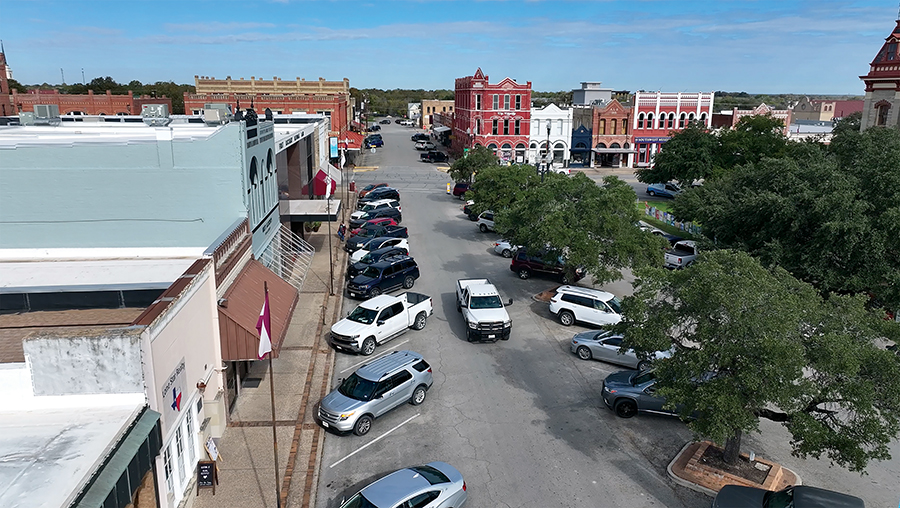
Downtown Square, Lockhart
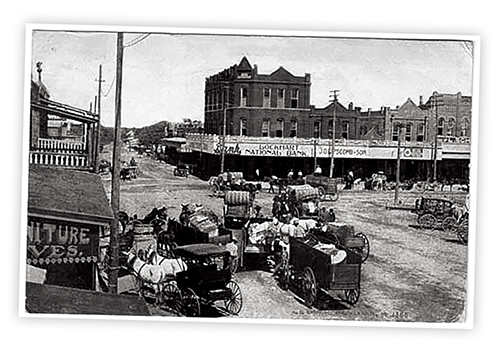
Lockhart’s historic downtown is evolving once more, with music venues, boutiques, new restaurants, a wine and book shop, and an art gallery.
But the past remains preserved: More than 20 historic buildings still stand around the town square. Just north of the historic courthouse — which was built in 1894 and renovated in 2000 — is a stretch of seven buildings built in the late 1800s and early 1900s.
On one corner, the Brock building, 101 E. San Antonio St., harkens back to a time after the Civil War, when the bustling cattle and cotton town was a launching point for the Chisholm Trail.
Andrew Brock, a local business baron who helped develop Lockhart, built the three-story red brick building in 1898 to house a dry goods store. It’s one of 12 buildings Brock financed that are still occupied today. Another just a few doors down, at 107 E. San Antonio, was originally a saloon and still bears Brock's initials, A.L.B.
Today it is home to a clothing shop, Rollfast Ranchwear. Next door are several still-standing buildings from 1902, including the former site of L. Swartz and Co.’s dry goods store, and a JCPenney store in 1994 that today is home to Southwest Museum of Clocks and Watches.
The discovery of oil ushered in the town’s second boom in the 1920s and the founding of several legendary barbecue stops, launching a dining tradition that’s still hot in Lockhart.
— Addie Broyles

Simon Theatre, Brenham

In the 1920s, the James Simon family of Brenham, owners of the local opera house, hired Alfred C. Finn, the architect behind the San Jacinto Monument, to build a Beaux-Arts Classical Revival-style building.
There, they hoped to offer vaudeville performances, silent films, “talkies” and a ballroom for residents of the economic capital of Washington County.
The Simon Theatre, at 111 W. Main St., opened in 1925 and it immediately became something bigger: a cultural center that ushered Brenham into a golden era of entertainment. Sadly, James Simon passed away before the theater was completed.
Later, the theater was sold to the Stuckert family, and multiple generations of that family ran it for almost 50 years. The theater closed in the 1980s.
At one point afterward, it housed a Chinese restaurant. In 2003, the building, in need of repairs, was purchased by Brenham Main Street Historical Preservation Inc., which spent the next 13 years — and more than $1 million — refurbishing it.
In 2016, the theater reopened as the Barnhill Center at Historic Simon Theatre, with a 321-seat auditorium and a renovated lobby.
The bright lights of the original theater’s vertical sign, or blade, still surround the Simon name, and the venue continues to draw crowds for movies, comedy shows, tribute bands and bona fide stars such as Ricky Skaggs.
Inside the lobby, you’ll find the Washington County Visitor Center and, on the second floor, a 220-person ballroom and smaller conference hall are available for rent. Get more information at thebarnhillcenter.com or call 979-337-7240.
— Addie Broyles
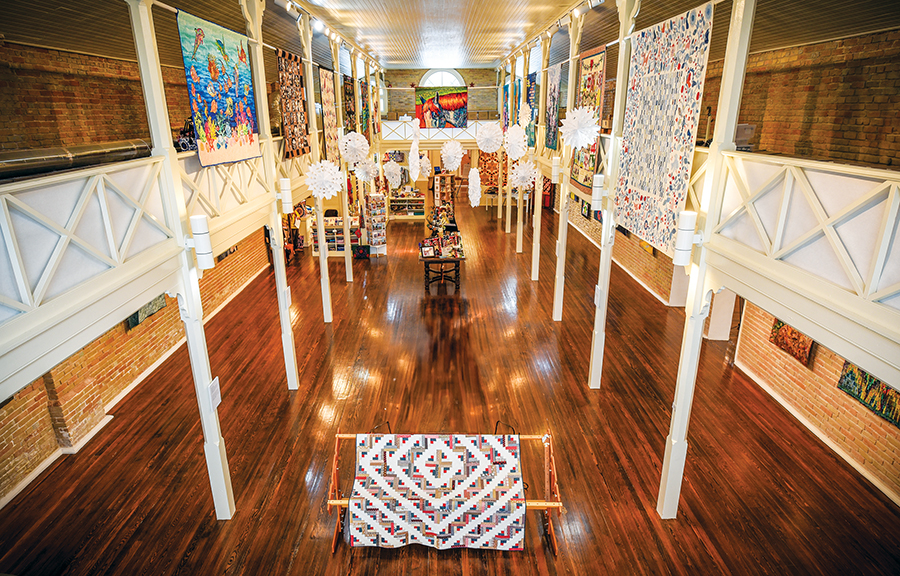
Texas Quilt Museum, La Grange
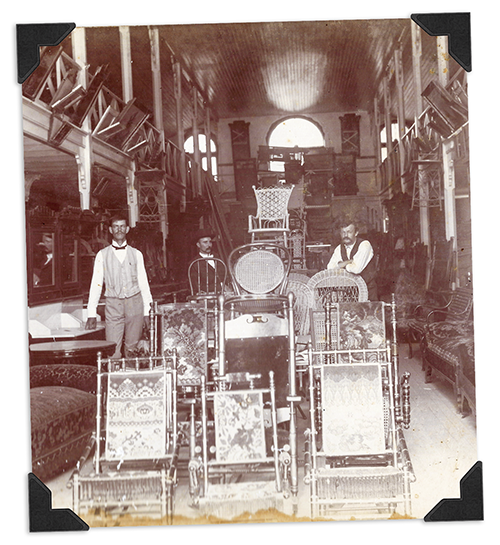
In May 1892, Frank Reichert moved his business into the furniture store he had built at 140 W. Colorado St. in La Grange.
The retail hub thrived, and in 1907 Reichert expanded into the building at 136 W. Colorado. Even though the store suffered a major blow from a devastating 1913 flood, causing $4,000 in damage — about $125,000 in today’s dollars — the buildings survived, and the store bounced back.
In 1922, it became known as Reichert and Kneip and then Kneip Furniture Company from 1941-1974. Other incarnations followed, including Sweitzer Hardware and Furnishings, Sports-n-Stuff, the Dusty Rose antiques store and a J.C. Penney catalog store.
In 2011, the old Reichert store and neighboring building took on new life as the Texas Quilt Museum. Today, the museum attracts visitors from around the world and is home to the largest quilt research library in the southwestern United States.
Guided by the Gensler architecture firm, the careful restoration of the buildings that house the museum has been recognized by Preservation Texas and other groups. Visitors can stroll the 10,000-plus square feet of display space, appreciating both the artistry of the quilts and the restoration of original building features like the hardwood floors.
The museum is open from 10 a.m. to 4 p.m. Thursdays-Saturdays. For more information, visit texasquiltmuseum.org or call 979-968-3104.
— Sarah Beckham
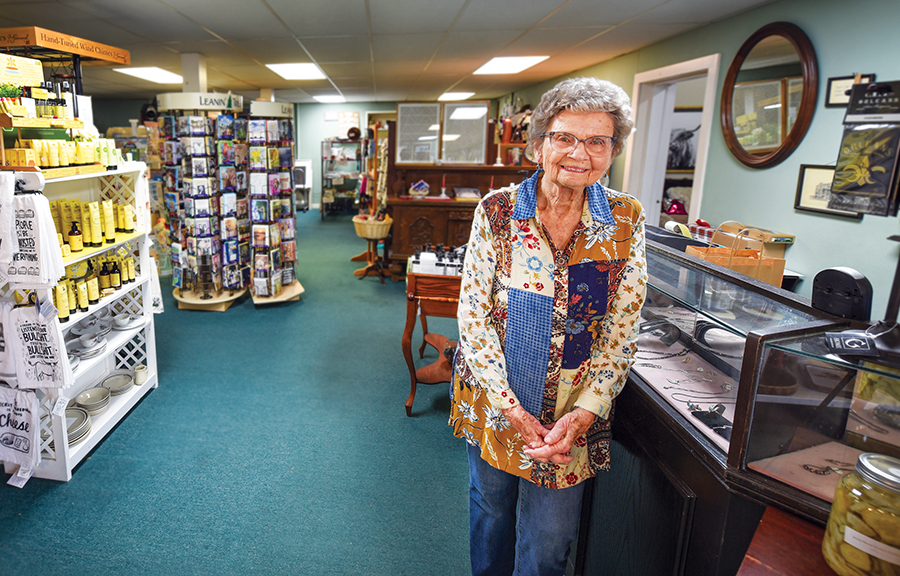
10 a.m. -5 p.m. Wednesday-Saturday.
The General Store, Lexington
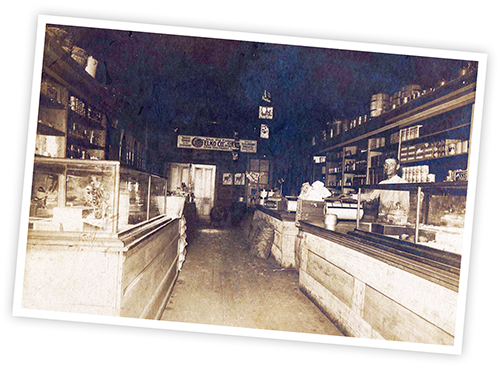
Long ago, Lexington residents in need of goods headed to a general store that became a family-owned legacy for generations.
The Hester Store was founded in 1868 by German immigrant Nicholas Hester. After his death, his widow kept it going, overseeing construction of a new location downtown in 1893.
Across decades, the store in Lee County was run by families connected through marriage: the Hesters, the Dowdys and the Engelharts. Hester son-in-law W. S. Dowdy took over in 1896 and the Dowdys operated it until 1917.
Then Henry Engelhart, a Hester son-in-law, took over, and his family operated it for another 28 years.
The building was torn down in 1967 and its site is now a vacant lot across from the Lexington Log Cabins. A few blocks away, though, Jean Dowdy, 91 — the granddaughter-in-law of W.S. Dowdy and Germania “Monnie” Hester Dowdy — carries on the family’s retail tradition.
Jean retired from her job at a medical office more than 30 years ago but quickly got bored. She bought an old Ford dealership at 608 N. Rockdale St. and christened it “The Dowdy House.”
Today she sells antiques, greeting cards and gift items there. While the original Dowdy family merchants rang up purchases on a big, blocky cash register, Jean scans customers’ credit cards with an iPhone or iPad.
— Sarah Beckham
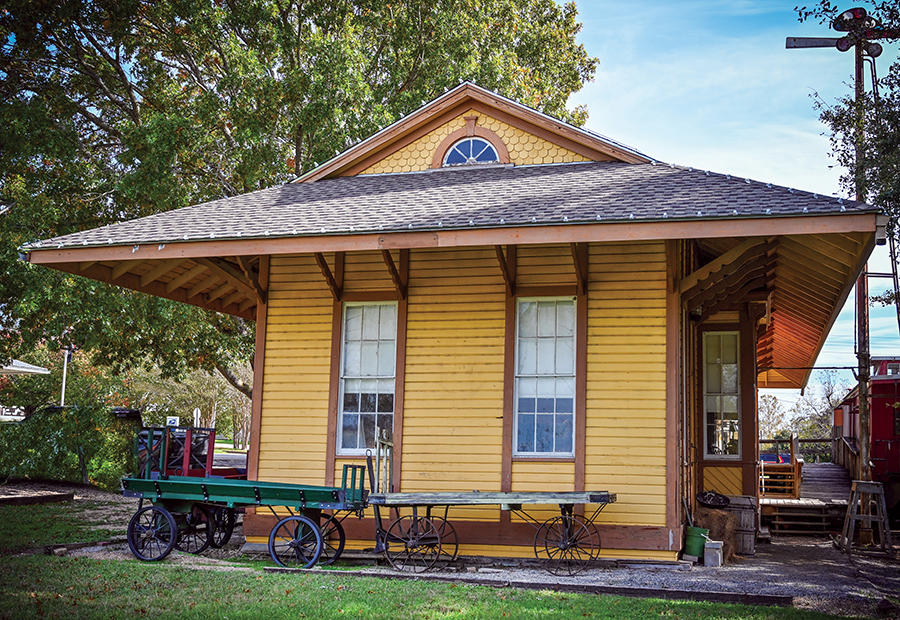
Railroad Depot, Burton
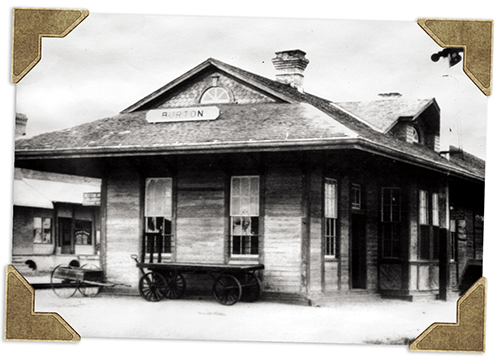
More than 140 years ago, the town of Burton in Washington County was a stop for trains carrying livestock, lumber, cotton and people traveling between Brenham and Austin on the Houston and Texas Central Railroad.
During the depot’s heyday, steam engines pulled trains into Burton four times a day. The original depot burned down in 1898, but was rebuilt and stood witness to passenger train travel until 1951. The last freight train rolled through Burton in 1980.
The old depot building had been moved, but the Burton Heritage Society bought it, moved it back near its original location and restored it in 1990.
Today, the society keeps Burton’s history alive for visitors inside the old depot. Items on display include railroad workers’ tools, an old ticket counter, toys and other pieces of the town’s past. Even signatures scribbled with pieces of coal by long-ago train workers remain on the walls of the old baggage and freight rooms.
The platform where passengers stood more than a century ago, listening for a distant train whistle, can still stoke the imagination.
The depot, which holds state and national historic designations, is 15 miles west of Brenham, at 507 N. Railroad St. It is open to visitors from 10 a.m. to 4 p.m. the first and third Saturdays of the month. Call 979-803-0393 for information.
— Sara Abrego
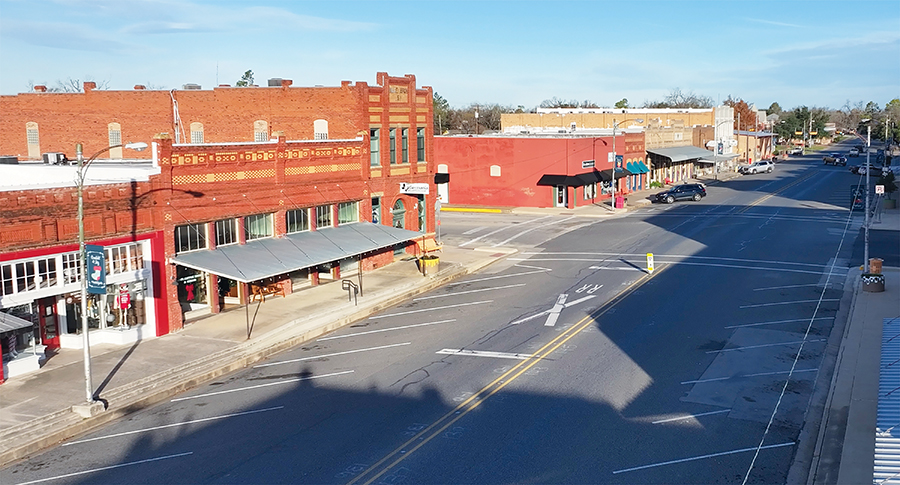
Main Street, Elgin

In Elgin’s historic downtown district, you’ll find more than 30 buildings dating back to the late 1800s and early 1900s, nearly all built with the town’s famous bricks.
This stretch of Main Street showcases several of them, including the still-standing Simon and Miller buildings. Simon’s Department Store, at the far left, was built in 1906 at 30 N. Main St.
It sold clothing for many years, and then became a furniture store that was divided into two buildings. Today it houses a bustling coffee shop and dance studio, plus two residences.
The two-story red brick Miller building next door, 34 Main St., was built in 1890 and was one of the town’s first banks. By World War II, it housed a domino hall that became a watering hole for soldiers training at nearby Camp Swift. In the decades after, the building housed the Merchants & Farmers State Bank, a hair salon and a financial advisor’s office.
Today it is home to McCrary Insurance, an independent agent representing Germania and other providers.
In the back, inside a 1910 addition, The Healthy Spot smoothie cafe serves visitors. In the next block, the first building’s second story burned in the 1950s, but the first floor was restored and became home to Upchurch’s Drug Store until the 1990s.
The rest of the block has several buildings circa 1900-1910: Singleton’s Grocery and Frost Barber Shop, Joe Toggery’s Building, and the O’Conner and Bengston buildings. Elgin remains a brick mecca: Three manufacturers still operate there, maintaining the town’s title as “The Brick Capital of the Southwest.”





